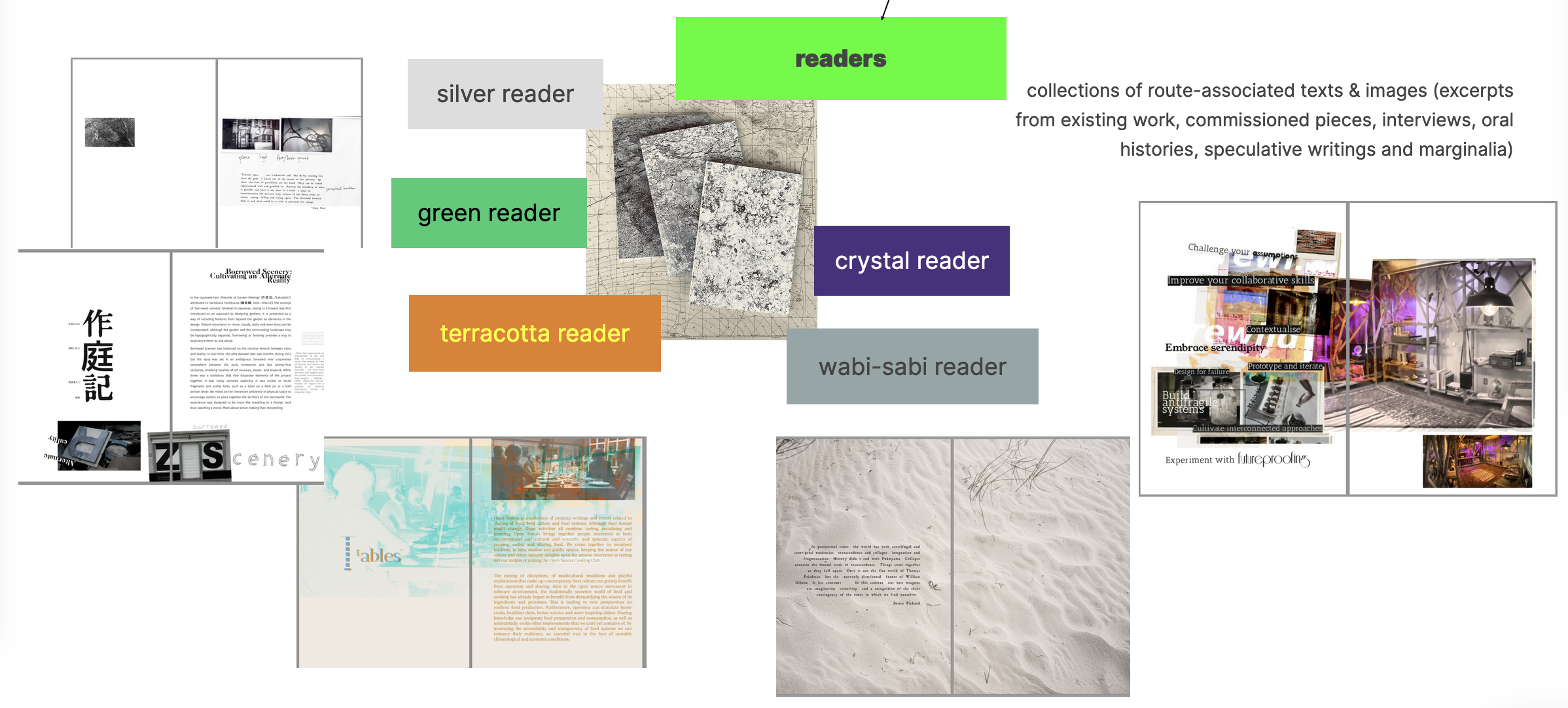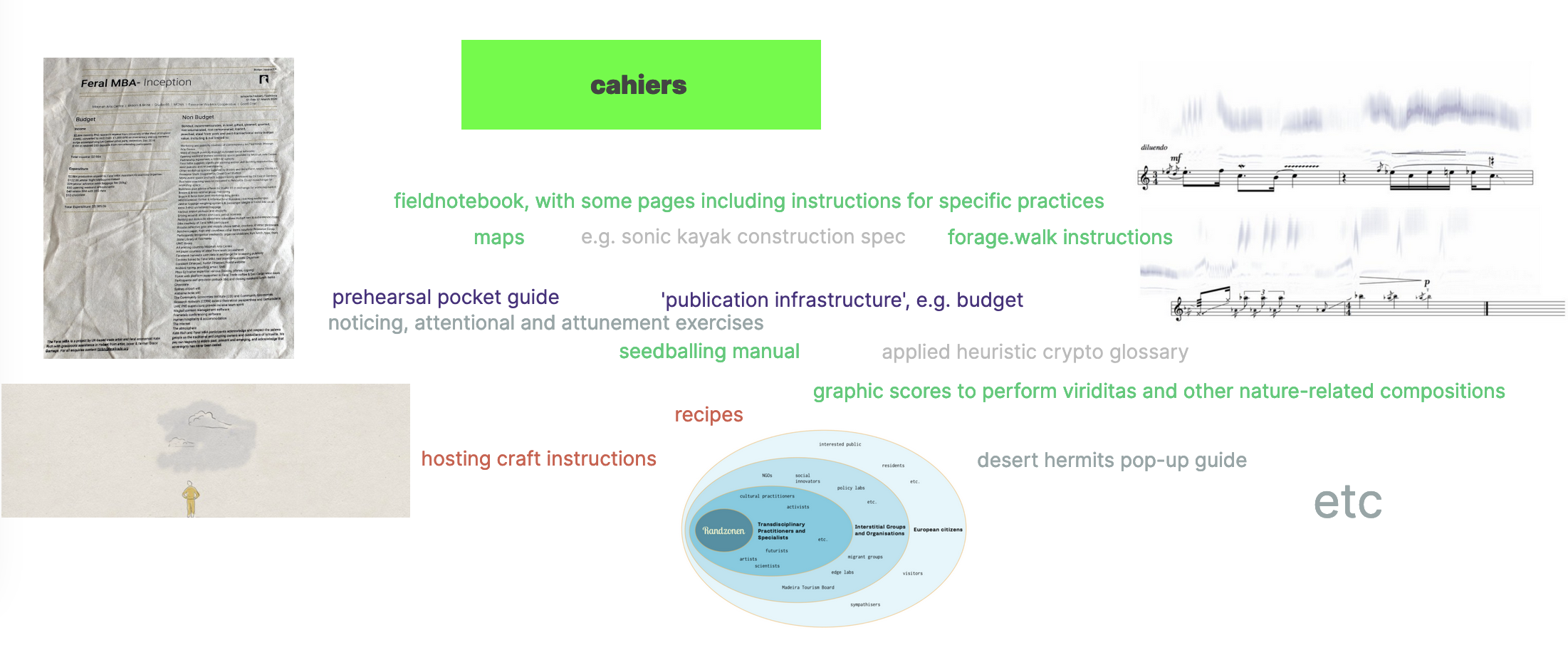Table of Contents
Fascicles
A fascicle is a 'bundle of structures': an individual, booklet-sized installment of a longer work. Developing the publication as a series of fascicles resonates with the diversity and flexibility of FoAM's work and ways of working.
Here are some examples of fascicles that might be included in the publication.
A Guidebook
A short introductory booklet, analogous to travel guidebooks, to help the readers navigate through the publication, its routes and fascicles.
Readers
A set of themed, book-length print and online publications. Probing the network's motto “grow your own worlds” from different angles, five readers track FoAM's enduring interests in augmented and mixed realities, non-human beings, food and hospitality, organisational experiments, and things transient and overlooked. To foreground process over simple descriptions of finished projects, these texts adopt a metaphor of routes or pathways, using multiple voices and a diverse range of material to support experiential engagements with the identified themes. Inspired by commonplace books, the readers gather reflections on previous work and current concerns, reprints of previous texts, annotations, commentary, and original new material.
Cahiers
Cahiers are 'One-quire' booklets, thus “cahier” (Middle French quaer, caier, quire. Middle English quair — four sheets of paper folded once, collection of sheets, from Anglo-French quaier, from Latin quaterni four each, set of four).
In this publication, cahiers are handmade, small fascicles that can be used 'in the field', reused, repurposed. Things like worksheets, exercise booklets, pocket-guides, recipes, instructions.
Combinatorial artifacts
Cards and other loose objects in book-sized boxes, to be used in workshops, coaching, futuring, and other participatory sessions with groups or individuals.
For example…
Photobooks
Multisensory experiences
For example…
(…) a fundamental reason for booklet production is the possibility of delaying any step which would absolutely determine the shape of the resulting codex. (…) On other occasions, substantial changes may accompany contextualization or codicizing of booklets. In effect, such changes reflect revisions in plan: rather than conceiving of the booklet as a basic unit, the producer begins to conceive of the unit of the whole codex. And when this step occurs, although production proceeds (or has proceeded) within booklet format, the “self-sufficiency” of the booklet is frequently lost. There are, I should think, two models for such a procedure, although both share the same ultimate effect, the obscuring of the existence of booklets altogether. First, booklets of less than a single quire in length can be imbedded into other textual units, typically at their middle, sometimes at their end. Second, larger booklets can be integrated or joined in ways which obscure the original separateness of their production. Such procedures, by readjusting textual linkages, in effect disrupt the appearance of “self-sufficiency” without changing the fact that the codex has been produced by means of booklets. (Ralph Hanna III, 1986)





